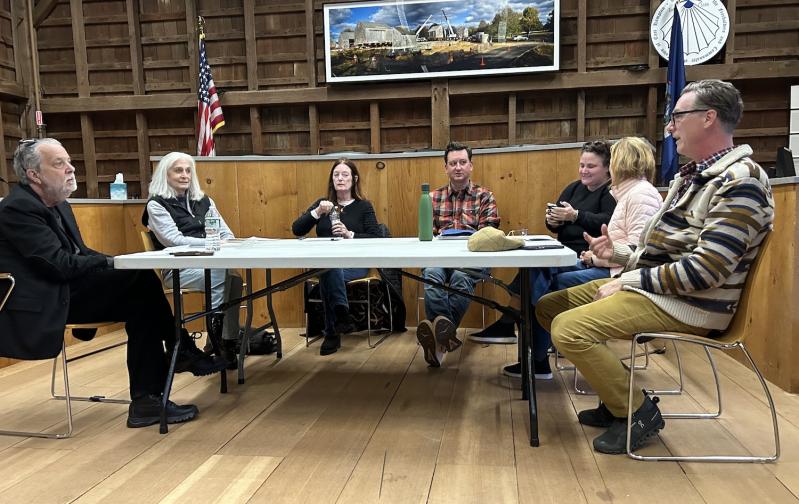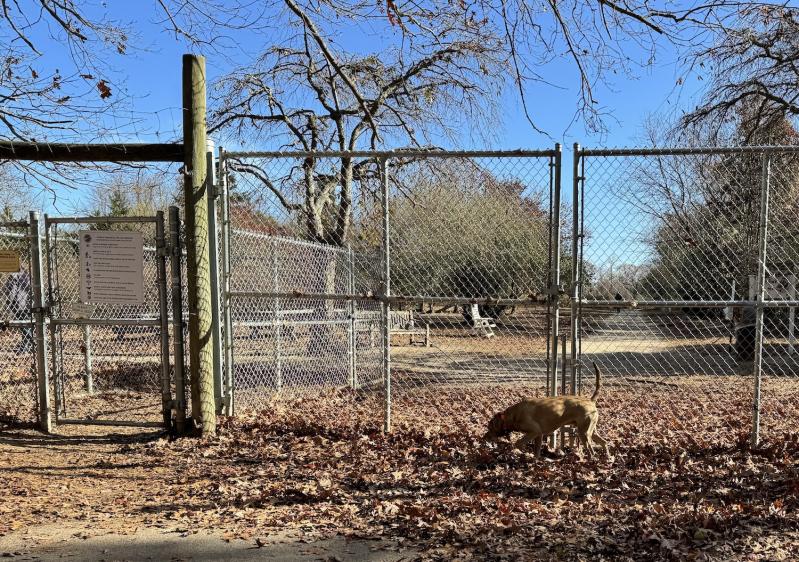Debate over the addition of an area for small dogs at the Springs Park continued this week as the park committee met to discuss recommended changes that also include removal of invasive species.
Discussions of changes at property commonly known as the Springs Dog Park have been marked by sharp disagreement that sometimes turned contentious, and on Monday, the East Hampton Town Board’s liaison to the committee, Councilman Ian Calder-Piedmonte, addressed those head-on. “The most important thing to me besides transparency is civility,” he said. “This conversation has been sometimes a little bit hot. There’s no need for that. I think we should let everyone express whatever opinions they have; disagreement is fine.” The committee’s recommendations will be the subject of an upcoming town board work session, likely in December, he said.

The main disagreement is over a proposed small dog area, or “safe space,” for those who want to limit interactions with larger dogs in the park. The proposal has been so fraught, in fact, that Neil Kraft, the committee’s chairman, questioned whether it should be removed from the recommendations.
“My point of view would be if people don’t want it, we should take it off the table,” he said, adding that, “clearly there is a very large organized fight against the little dog area.”
However, both his fellow committee member Devlin Elliot and Mr. Calder-Piedmonte said they had heard from people who are still interested in, and indeed support, the idea.
Many people have contacted the councilman saying that they “don’t go to the park because they have concerns,” he said. “There are people who aren’t regular users because they don’t feel safe.”
“That’s why I’m on this committee,” Patrice Dalton added. “I am one of those people. I would like to use the park, and I try to represent people who won’t use the park.”
The original idea was to provide a closed-in area for either elderly park visitors or any visitors with smaller dogs so that they could visit without feeling threatened by larger, potentially more aggressive, dogs. Two key issues the location for the small dog area and how much vegetation would have to be cleared to create it.
Another controversial subject tackled Monday was the idea for a test area within the park to see how the removal of the invasive species would affect the land.
This would also be done at the discretion of the town board. As Mr. Calder-Piedmonte described it, the general idea would be to “pick a couple of test sections, wait until leaves have dropped, identify the invasives, and do a delicate clearing and see what it looks like.”
“The goal is to stop the invasive species from taking over,” he added, “and if you can do that in the most delicate, non-impactful way, that is what we’re going to try to do.”
The committee also clarified that it is not suggesting removing any trees or major vegetation. “A lot of us are thinking about the lower brush area,” Gena Chavez, a committee member, clarified, with autumn olive being the most notable invasive mentioned.
Ultimately the committee agreed to stand by its initial recommendations for both the small dog area and test area for invasive species removal, but the final decision will be the town board’s.
With this subject having already stirred up many strong opinions, Mr. Calder-Piedmonte encouraged community members to voice them to either himself or the town board directly. There will be an opportunity to do so at the upcoming work session when the park is discussed, or during public comment portions of regular town board meetings.




